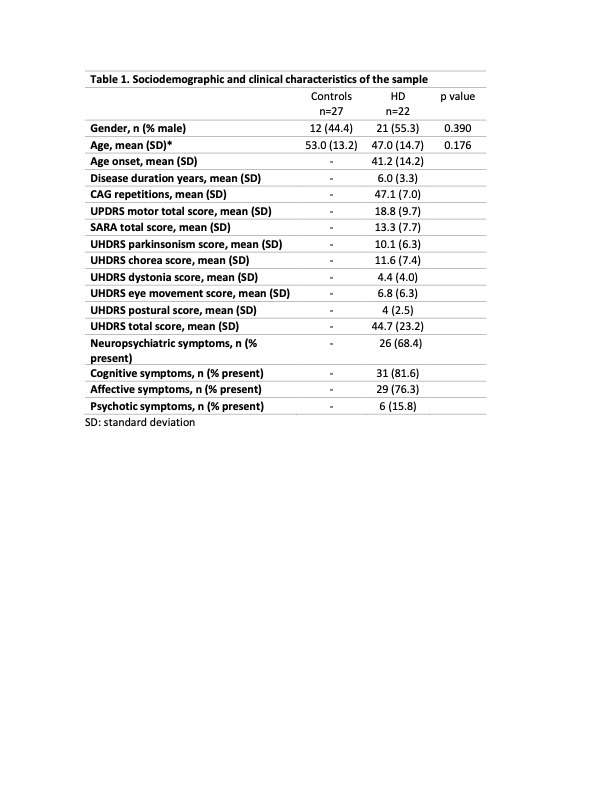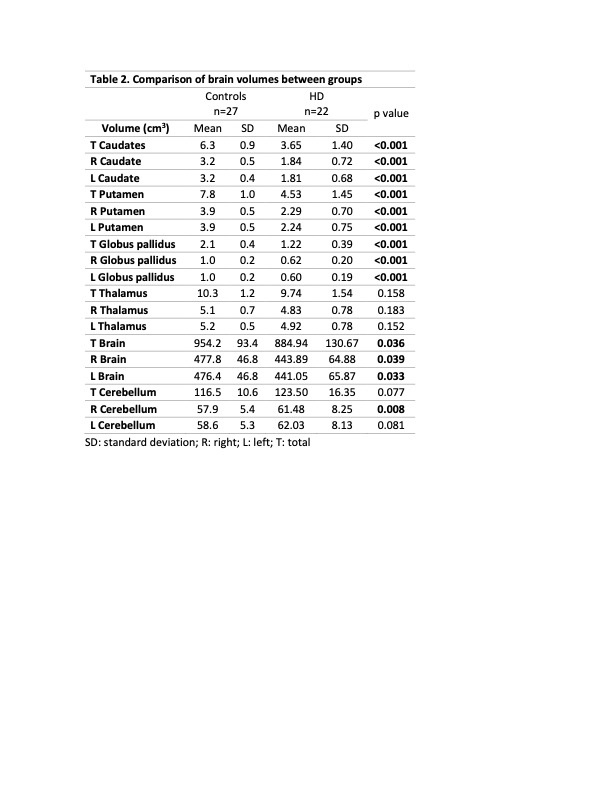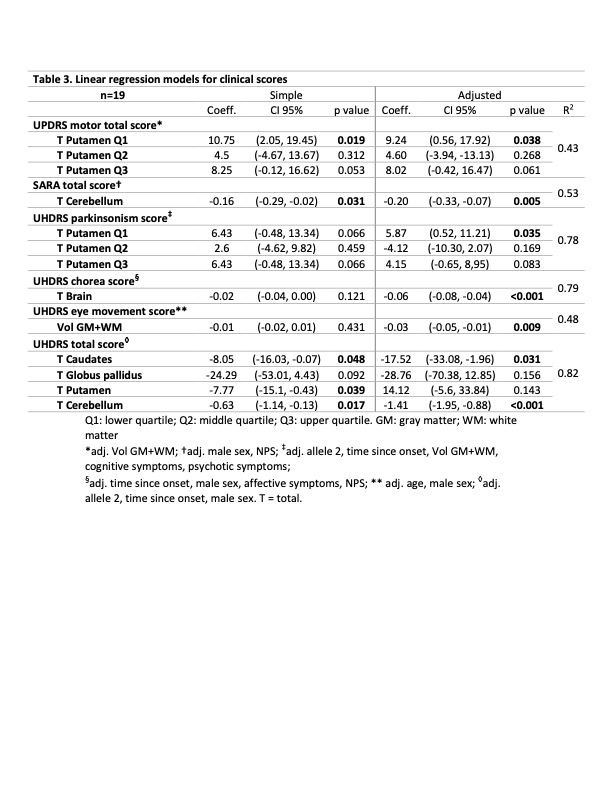Category: Huntington's Disease
Objective: To analyze the relationship between motor scales and brain magnetic resonance imaging (MRI) features in a cohort of Huntington disease (HD) patients.
Background: Cerebellar symptoms, as other motor features, largely affects HD patients; nonetheless, their clinical significance is scarcely studied. Here, we evaluated the relationship between cerebellar and other motor scales (UHDRS, UPDRS, SARA) and volumetric brain measurements in patients with HD.
Method: Cross-sectional analysis of sociodemographic and clinical data of 38 patients and MRI features of a subset of 22 patients from a Movements Disorders Clinic in Mexico. Also, brain volumes were compared with a control group (n=27).
Results: The mean age of patients was 47.0±14.7y; 55.3% were men.[table1] Comparing MRI volumetric findings [table2], significant differences between groups were observed, except for the thalamus, right, and total cerebellum volumes (p>0.05). We observed that patients have lower brain volumes than the control group, except for cerebellum that was higher in HD. For the total UHDRS score, there is a significant association with the total caudate and cerebellum volumes. This was reflected in an average increase of 17.52 points of the total UHDRS score for each cm3 that the caudate volumes decreases; and an average increase of 1.41 points of the total UHDRS score for each cm3 that the total cerebellum volume decrease, even when other variables such as alleles length, duration of the disease, genre, and the total globus pallidus and putamen volumes were considered [table3]. Analyzing other adjusted models shown significant associations between the motor score of the UPDRS scale and the total volume of the putamen; total SARA score and total cerebellar volume; the whole brain volume and chorea subscale of the UHDRS; and the whole brain volume and UHDRS eye movement score.
Conclusion: Our data showed, as expected, that the brain volumes were lower in HD than controls; nevertheless, cerebellum volumen were higher in HD patients, as described before in early-onset HD. Overall, a negative relationship of brain volumes with clinical scales scores was found. Volumetric MRI features contribute in the understanding of the clinical manifestations of this complex disease.
To cite this abstract in AMA style:
H. Martinez-Hernandez, D. Lopez-Mena, A. Medina-Islas, L. Alvarez, I. Acosta. Cerebellar and other motor symptoms relationship with MRI features in Huntington disease. [abstract]. Mov Disord. 2022; 37 (suppl 2). https://www.mdsabstracts.org/abstract/cerebellar-and-other-motor-symptoms-relationship-with-mri-features-in-huntington-disease/. Accessed April 2, 2025.« Back to 2022 International Congress
MDS Abstracts - https://www.mdsabstracts.org/abstract/cerebellar-and-other-motor-symptoms-relationship-with-mri-features-in-huntington-disease/



